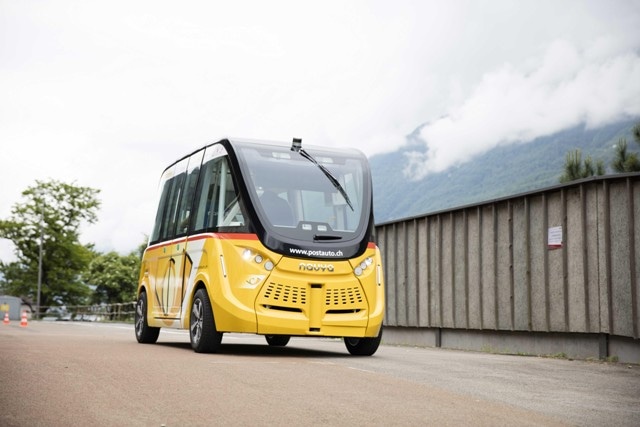Jun 24 2016
Driverless vehicles will be tested on public roads – a first for Switzerland – starting today. EPFL is the research partner on the project.
 Autonomous shuttles will carry up to 11 passengers at a time. © Car Postal
Autonomous shuttles will carry up to 11 passengers at a time. © Car Postal
Autonomous shuttles will make history in Switzerland today when they begin carrying passengers in the historical district of Sion, the largest city in the Canton of Valais. Two vehicles will wend their way along the edge of town and through the pedestrian area, and stops will include the Place de la Planta and the Place du Midi. This pilot project, which is part of the Mobility Lab Sion Valais initiative, is an opportunity for EPFL researchers to test and improve their traffic and fleet-management algorithms.
The smart vehicles will be run by PostBus, Switzerland’s leading public bus operator. They will carry up to 11 passengers at a time, at a maximum speed of 20 kilometers per hour. They will be monitored and controlled by a remote operator using a software program developed by the EPFL startup BestMile. For reasons of safety and security, an attendant will be onboard during this groundbreaking test phase. The shuttles will be free of charge, and a set schedule will be announced once the test phase has been completed.
Acess ramp and windshield wiper
The Swiss Federal Roads Office and the Valais Roads Service carefully analyzed both technical and legal considerations before green-lighting the tests. But the electric vehicles had to be brought up to spec first. This included installing air conditioning, a second battery, an access ramp for people with reduced mobility and a windshield wiper for the front window.
The challenge for the researchers from EPFL’s Urban Transport Systems Laboratory is to develop a fleet-management system able to handle the many situations that autonomous vehicles could encounter. The vehicles must also be able to communicate with each other and with others on the road so that they can adjust their speed as necessary and respect the right-of-way.
The two-year project is supported by the Commission for Technology and Innovation (CTI). It will include a reliable system for managing the specific needs of passengers, such as on-demand service, booking a ride in advance and offering flexible routes. The algorithms will have to be able to manage these tasks in real time, without sacrificing safety or cost efficiency. Once ready, the algorithms will be incorporated in the central fleet-management system.